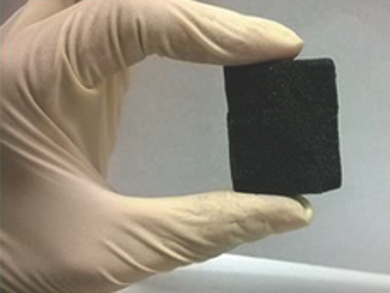Lithium ion batteries are of great interest due to their high energy density, high potential and environmental friendliness. Graphitic anodes in combination with electrochemically active materials such as silicon show high capacities. Unfortunately, these anodes suffer from a lack of stability as volume changes during the lithiation and delithiation process result in the deconstruction of the electrode material. In order to provide more space for lithium insertion, nano-structured materials such as silicon nanowires, -tubes and -particles are often used.
Shubin Yang and Songmei Li, Beihang University, Beijing, China, and their colleagues use a simple approach for the production of a 3D graphene-silicon nano-network: In a first step, graphene oxide nanosheets are wrapped onto the walls of a commercial sponge. A thin layer of SiO2 is then grown on the surface of the graphene oxide sponge and subsequently reduced to Si by a magnesium thermal reaction.
The resulting porous 3D structure shows good flexibility, high electrical conductivity, and ultrathin hybrid walls. These features lead to a superior electrochemical performance, especially in terms of reversible capacity, rate capability and cyclability.
- From Commercial Sponge Toward 3D Graphene-Silicon Networks for Superior Lithium Storage,
Bin Li, Shubin Yang, Songmei Li, Bo Wang, Jianhua Liu,
Adv. Energy Mater. 2015.
DOI: 10.1002/aenm.201500289



